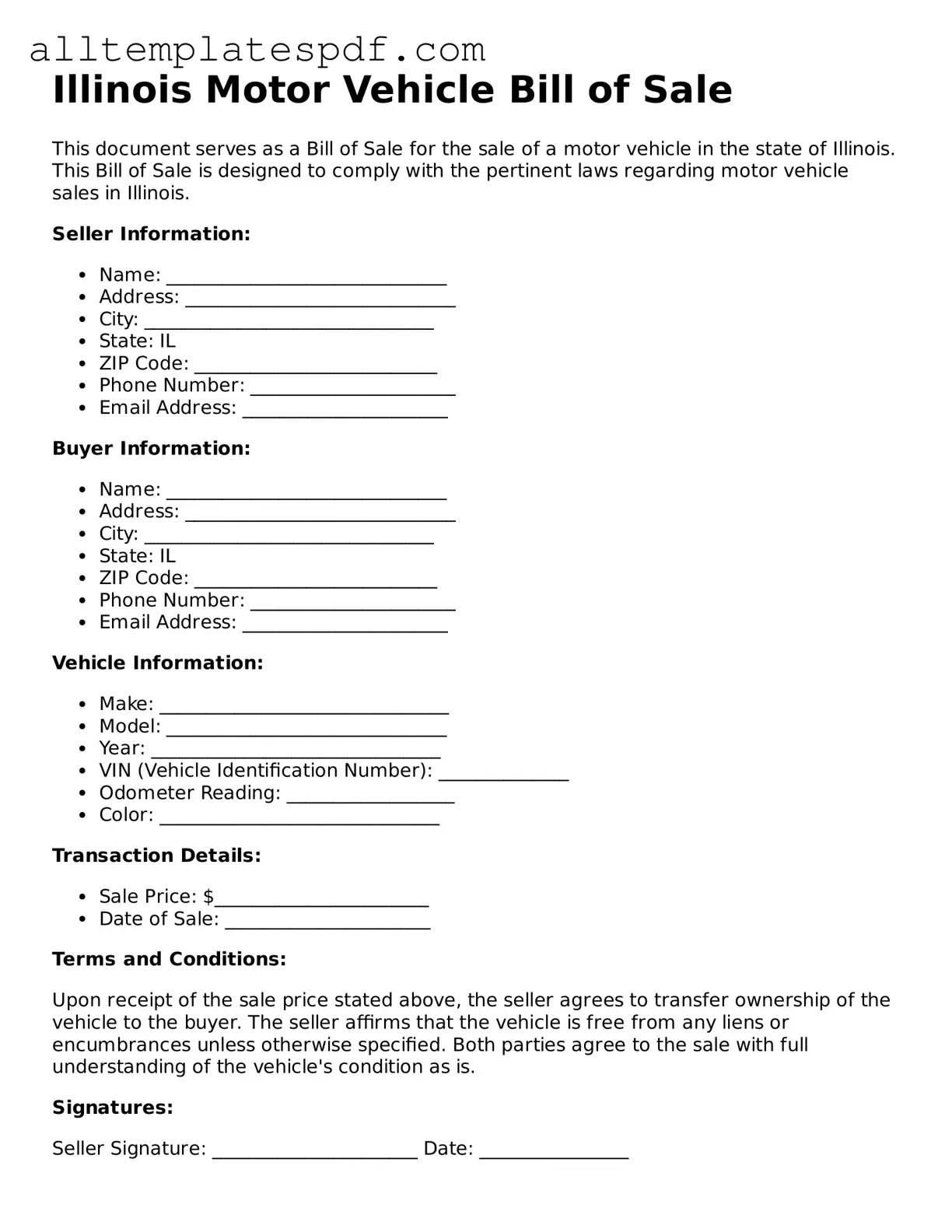Filling out the Illinois Motor Vehicle Bill of Sale form can seem straightforward, but many individuals make common mistakes that can lead to complications. One frequent error is failing to provide accurate vehicle identification numbers (VIN). The VIN is crucial for identifying the vehicle and ensuring that the sale is valid. If the VIN is incorrect or missing, it can cause issues with registration and ownership transfer.
Another common mistake involves not including the correct purchase price. The form requires the seller to specify the amount for which the vehicle is sold. If this figure is omitted or inaccurately stated, it can lead to disputes between the buyer and seller or complications with tax assessments.
Many people also overlook the importance of signatures. Both the seller and the buyer must sign the document to validate the transaction. A missing signature can render the bill of sale ineffective, leading to potential legal issues down the line.
Some individuals neglect to date the form. The date is essential as it marks the official transfer of ownership. Without a date, it may be unclear when the transaction occurred, which can complicate matters if any disputes arise later.
Inaccurate personal information is another issue. Sellers and buyers must ensure that their names and addresses are correctly entered. Mistakes in this section can lead to difficulties in communication and legal identification in the future.
People sometimes fail to indicate whether the vehicle is being sold "as-is." This designation is important as it clarifies the condition of the vehicle and the responsibilities of both parties. Without this clarification, the seller may face unexpected claims from the buyer regarding the vehicle's condition.
Another mistake is not providing a complete description of the vehicle. The make, model, year, and color should all be included. A vague description can lead to confusion and disputes over the vehicle being sold.
Some individuals forget to keep a copy of the completed bill of sale for their records. Retaining a copy is important for both parties, as it serves as proof of the transaction and can be useful for future reference.
People may also overlook the need for notarization. While notarization is not always required, having the document notarized can add an extra layer of authenticity and protection for both parties.
Lastly, some individuals fail to check for any outstanding liens on the vehicle. Ensuring that the vehicle is free of liens is crucial for a smooth transfer of ownership. If a lien exists, it may complicate the sale and lead to legal issues for the buyer.
